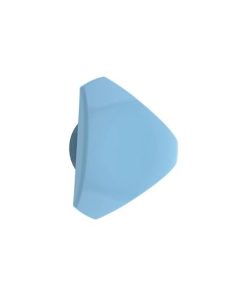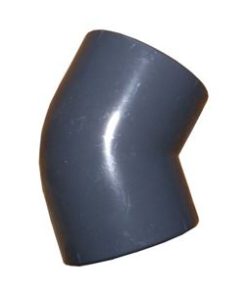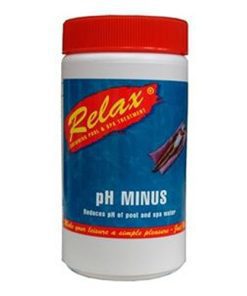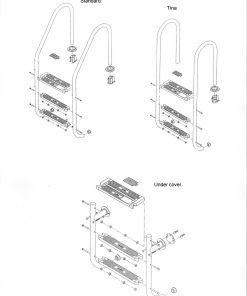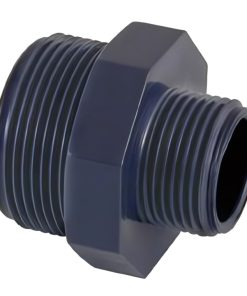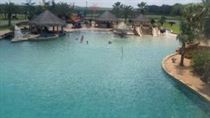Hottub, Swimming Pool
Spa Pool Maintenance: A Step-by-Step Guide to a Safe and Healthy Experience
Spa Pool Maintenance: A Step-by-Step Guide to a Safe and Healthy Experience
Spa pool maintenance plays a crucial role in maintaining user health and safety. The failure to perform regular maintenance operations allows dangerous bacteria and microorganisms to flourish turning your relaxation area into a hazardous environment. This blog post examines essential spa pool maintenance requirements through references to HSE document HSG282 to provide you with guidance for maintaining safe and sanitary conditions [1, 20].
Why is Spa Pool Maintenance Important?
The combination of warm temperatures and other environmental conditions within spa pools enables microorganisms to grow (4):
Spa pools operate at their best temperature range of 30–40 °C which creates an ideal environment for bacterial growth including Legionella [3].
The air jets together with water agitation create aerosols that release bacteria into the air according to [3, 5].
The high number of users in relation to water volume leads to increased organic matter concentration which serves as microbial nutrition [6].
Key Maintenance Tasks
The process of effective maintenance requires several fundamental tasks which need regular execution [16, 21].
Commercial facilities need to perform complete water replacements when their bather numbers reach 100 times the pool capacity [22]. Hot tubs operated within business environments need water replacement either weekly or after every group of users [23].
Water Quality Testing: Regular testing of pH, disinfectant levels, and total dissolved solids (TDS) is crucial. Commercial pools need to test water quality daily or at two-hour intervals [17]. A monthly test should determine the presence of microbiological substances [22].
Filtration: Daily backwashing of sand filters and periodic chemical cleaning and drying of cartridge filters should be performed to guarantee proper filtration system operation [24, 25].
Daily cleaning of waterline areas and overflow channels and skimmers along with the surrounding areas should be performed to eliminate contaminants [26].
Disinfection: Appropriate disinfectants such as chlorine or bromine should be used to achieve correct microbial growth control levels. The spa equipment should activate automatically twice a day for water treatment throughout the entire system [27].
A Weekly Maintenance Schedule Example
This schedule demonstrates a weekly maintenance plan to help you manage your spa pool:
Daily: You should inspect water clarity together with the dosing system and chemical levels as well as pH and disinfectant residuals. Regular daily maintenance includes cleaning the waterline together with overflow channels and spa surround areas [17, 26].
Weekly: Check the condition of strainers and grilles while performing their cleaning operations. The spa water needs weekly replacement for commercial facilities that have low user traffic or after each user group [18, 23].
Monthly: Perform flexible hose disinfection and complete chemical testing while cleaning the input air filter and performing microbiological tests for ACC, coliforms, E coli and P aeruginosa [18, 22].
Quarterly: Check the filtration system’s performance while also disinfecting airlines and performing their cleaning tasks. Regular legionella testing is required [22].
Semi-Annually: Drain and clean balance tank [18].
Cleaning Procedures
Sodium bicarbonate serves as an optimal cleaning agent for waterlines but a 100mg/l free chlorine solution provides the most effective solution for overflow channels [26, 28]. The balance tank together with spa covers and headrests and jets require thorough cleaning and disinfection to eliminate all biofilm and debris [27, 28].
Key Takeaway
Proper maintenance serves as the key to ensure spa pools provide both safety and enjoyable experiences. Proper execution of scheduled maintenance tasks combined with regular inspections will stop harmful microorganisms from growing while sustaining a sanitary environment. Consult a professional for expert advice and for any complex spa repairs.
Keywords: Spa Maintenance, Hot Tub Cleaning, Pool Care, Spa Water Treatment, Legionella Prevention, Spa Hygiene
FAQs
How frequently should I replace the water in my spa?
A commercial spa requires water replacement when the bather load reaches 100 times the water capacity. Hot tubs operated within business activities need their water changed either weekly or following each group of users according to [22, 23].
What is the ideal pH level for a spa pool?
A spa pool should maintain pH between 7.0 and 7.6 [29].
Which filter cleaning procedure should I use?
Backwashing sand filters needs to happen on a daily basis. Regular chemical cleaning combined with drying and replacement procedures should be performed on cartridge filters according to recommendations 24 and 25.
I need to check for legionella at what interval?
Regular legionella testing should occur once every quarter for spa pools [22].
Using sodium bicarbonate on a clean damp cloth provides the best method to clean the spa pool waterline.


